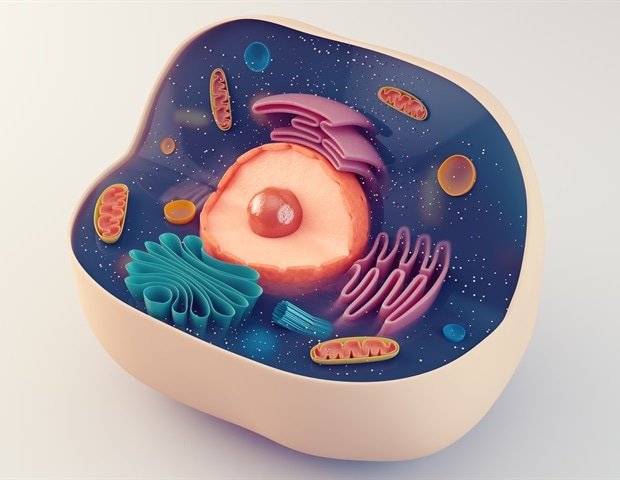Blog
Rice researchers are growing a unusual toolkit for the growth of clever cells
Bioengineers at Rice College possess developed a unusual toolkit for constructing custom-made sensory and response circuits in human cells. The analysis revealed within the journal represents a serious breakthrough in the sphere of artificial biology that would revolutionize therapies for advanced ailments akin to Autoimmune illness and most cancers.
“Think about tiny processors in cells product of proteins that may resolve the best way to reply to sure alerts and the way irritationtumor progress markers or blood sugar ranges,” mentioned Xiaoyu Yang, a graduate pupil within the Programs, Artificial and Bodily Biology PhD program at Rice and lead writer of the research. “This work brings us an entire lot nearer to with the ability to construct “sensible cells” that may detect indicators of illness and instantly provoke customizable therapies in response.”
The unusual method to designing synthetic mobile circuits is primarily based on phosphorylation –; a pure course of that cells exercise to answer their setting by including a phosphate group to a protein. Phosphorylation is concerned in quite a lot of mobile features, together with the conversion of extracellular alerts into intracellular responses –; B. journey, secrete a substance, react to a pathogen or specific a gene.
In multicellular organisms, phosphorylation-based signaling typically entails a multistep, cascading impact like falling dominoes. Earlier makes an attempt to take advantage of this mechanism for therapeutic functions in human cells possess targeted on reworking native, present signaling pathways. Nonetheless, the complexity of the paths makes them tough to work with, so the potential functions possess remained fairly restricted.
Nonetheless, because of unusual findings from Rice researchers, phosphorylation-based improvements in sensible cell know-how might see a major uptick in the approaching years. What made this breakthrough potential was a change of perspective:
Phosphorylation is a sequential course of that happens as a collection of interconnected cycles main from mobile enter (i.e., one thing the cell encounters or senses in its setting) to output (what the cell does in response). What the analysis group discovered –; and got down to show -; was that every cycle in a cascade could be handled as an elementary unit and these items could be related collectively in unusual methods to assemble completely unusual pathways connecting mobile inputs and outputs.
This considerably expands the design scope for sign circuits. It seems that phosphorylation cycles will not be simply interconnected, however interconnected -; We weren’t certain beforehand if this may be potential with this degree of sophistication.
Our design technique allowed us to develop artificial phosphorylation circuits that will not be solely extremely tunable, however may perform in parallel with cells’ personal processes with out affecting their viability or progress price.”
Caleb Bashor, assistant professor of bioengineering and life sciences and corresponding writer of the research
Whereas this sounds easy, it’s considerable to determine the principles for constructing, connecting, and tuning the items. together with the design of intra- and extracellular shops –; was something however. Moreover, the indisputable fact that artificial circuits may very well be constructed and applied in residing cells was not a given.
“We didn’t essentially anticipate that our artificial signaling pathways, that are composed completely of engineered protein components, would perform at an analogous pace and effectivity as pure signaling pathways in human cells,” Yang mentioned. “Useless to mutter, we have been pleasantly shocked to seek out this was the case. It took plenty of effort and collaboration to come by this executed.”
The modular, do-it-yourself method to mobile circuit design proved able to reproducing an considerable system-level functionality of native phosphorylation cascades, specifically, amplifying weak enter alerts into macroscopic outputs. Experimental observations of this impact confirmed the group’s quantitative modeling predictions and bolstered the worth of the unusual framework as a elementary software for artificial biology.
One other clear benefit of the unusual method to sensing-response mobile circuit design is that phosphorylation happens shortly, in only seconds or minutes, so the unusual artificial phospho-signaling circuits might probably be programmed to answer physiological occasions, that happen in an analogous timeframe. In distinction, many earlier artificial circuit designs have been primarily based on completely different molecular processes akin to transcription, which may consume many hours to activate.
The researchers additionally examined the circuits for his or her sensitivity and means to answer exterior alerts akin to inflammatory components. To show its translational potential, the group used the framework to develop a mobile circuit that would sense these components and be used to manage and cut back autoimmune flare-ups Immunotherapy-associated toxicity.
“Our analysis proves that it’s potential to construct programmable circuits in human cells that reply shortly and precisely to alerts, and is the primary report of a package for growing artificial phosphorylation circuits,” mentioned Bashor, who additionally serves as deputy director for is the Rice Artificial Biology Institute, based earlier this yr to leverage Rice’s in depth experience in the sphere and catalyze collaborative analysis.
Caroline Ajo-Franklin, who serves as institute director, mentioned the research’s outcomes are an instance of the transformative work Rice researchers are doing in artificial biology.
“If artificial biologists possess realized over the previous 20 years the best way to manipulate the best way micro organism step by step reply to environmental stimuli, the work of the Bashor laboratory takes us to a unusual horizon – controlling the quick response of mammalian cells to alter.” mentioned Ajo-Franklin, professor of organic sciences, bioengineering, chemical and biomolecular engineering and fellow on the Most cancers Prevention and Analysis Institute of Texas.
Analysis reported on this press launch was supported by the Nationwide Institutes of Well being (R01EB029483, R01EB032272, R21NS116302, 5R35GM119461), the Workplace of Naval Analysis (N00014-21-1-4006), Robert J. Kleberg Jr. and Helen C. Kleberg Basis, Claire Glassell Pediatric Fund, Grace Reynolds Wall Analysis Fund, and the Nationwide Science Basis (1842494). The content material herein is solely the accountability of the authors and doesn’t essentially characterize the official views of the funding organizations and establishments.
Supply:
Journal reference:
Yang, X., . (2025). Improvement of artificial phosphorylation signaling networks in human cells. . doi.org/10.1126/science.adm8485.

